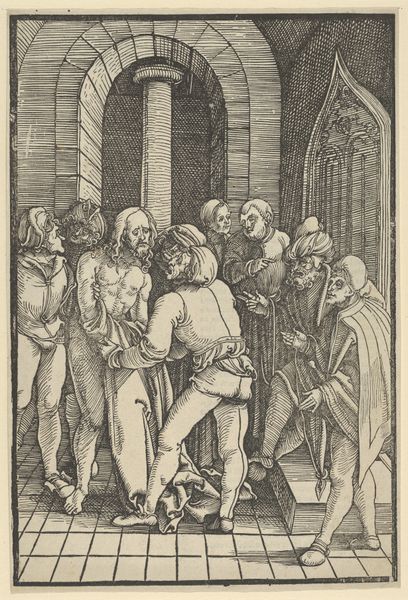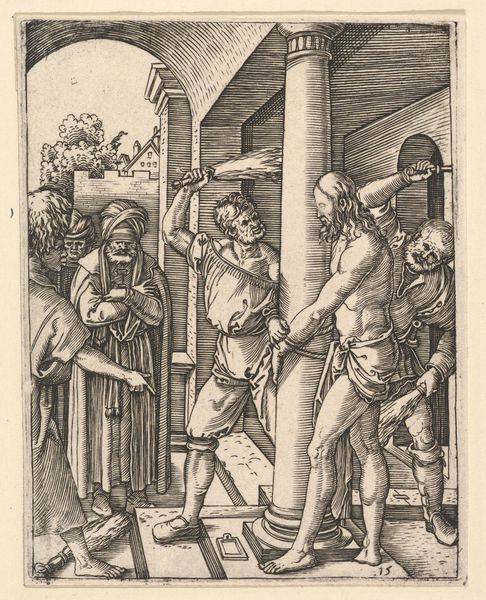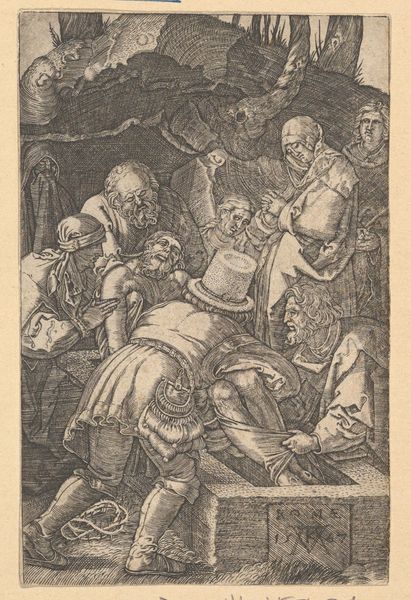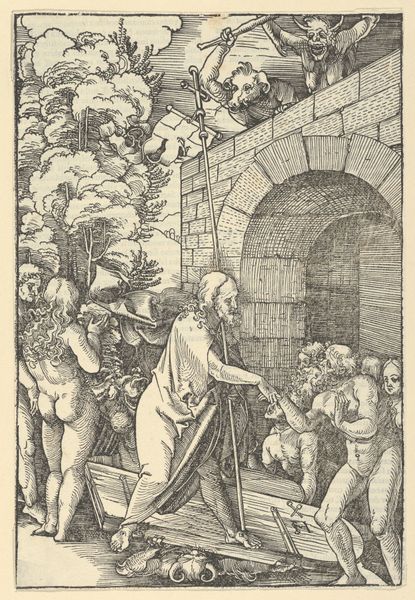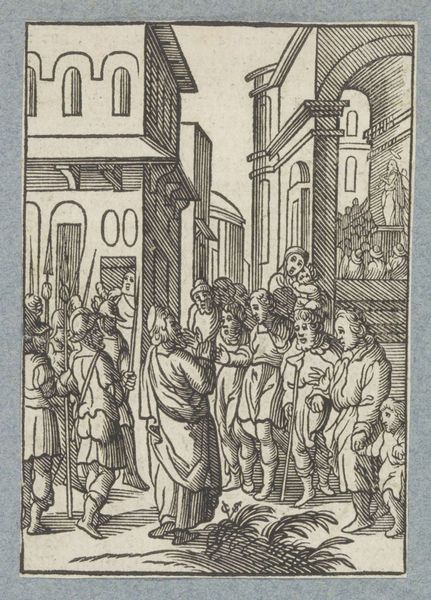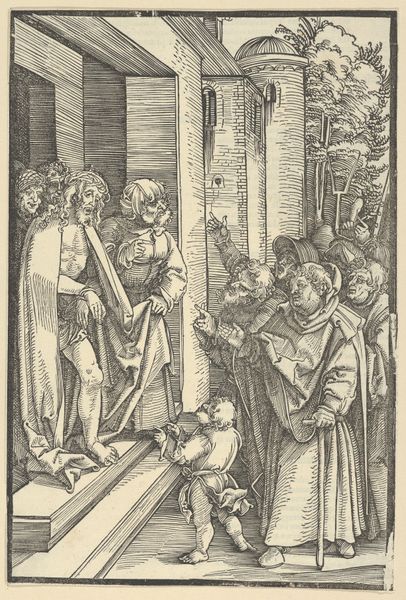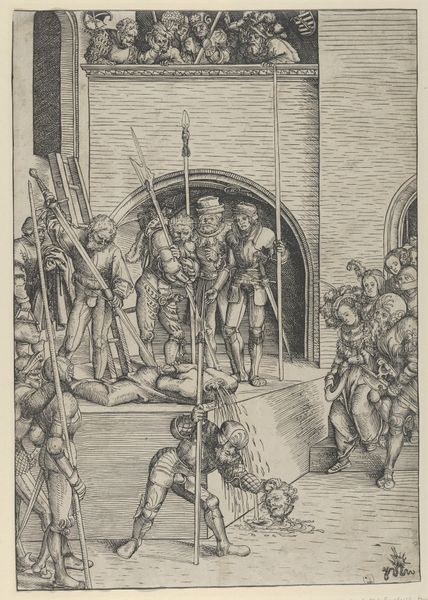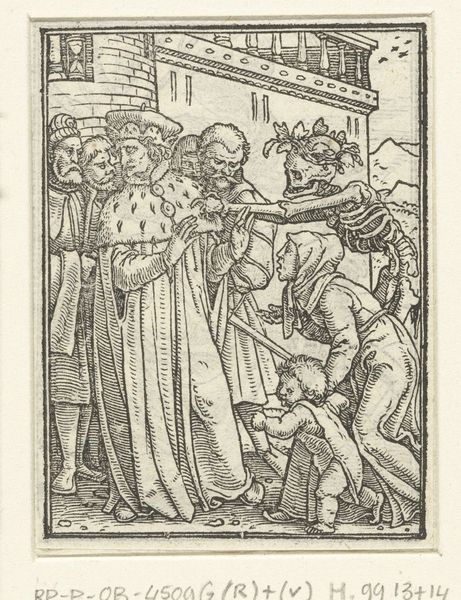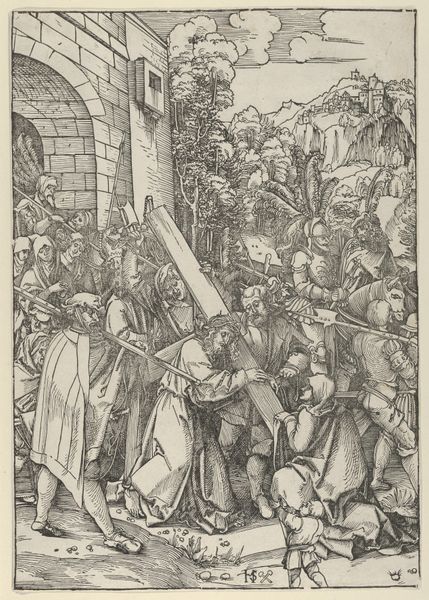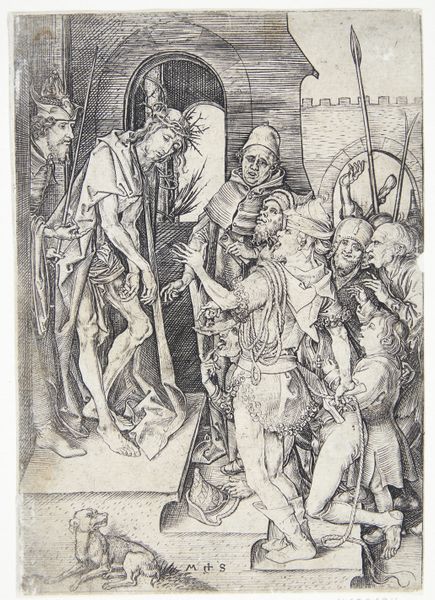
Christ Scourged, from "The Doctrine, Life, and Passion of Jesus Christ" 1537
0:00
0:00
Dimensions: Sheet: 5 3/8 × 4 1/16 in. (13.7 × 10.3 cm)
Copyright: Public Domain
Curator: Here we have Hans Schäufelein's "Christ Scourged, from 'The Doctrine, Life, and Passion of Jesus Christ'," created around 1537. It's currently part of the Metropolitan Museum of Art's collection. This work is an intaglio print, utilizing engraving techniques. Editor: Ugh, powerful. It's brutally stark, isn't it? All those harsh lines, crammed figures…it really conveys the violence of the scene. It's kind of amazing, but it definitely makes me squirm. Curator: Indeed. The image reflects the material realities of the time; the accessibility of prints allowed these religious narratives to circulate widely. Think of the labor involved: the engraver meticulously carving the image into the metal plate, producing each impression by hand. It’s an act of devotion materialized. Editor: Right, you can almost feel the weight of the hammer driving the tools. I'm drawn to Christ's pose—that drooping head and the defeated posture – juxtaposed against the active cruelty of his tormentors. The artist is showing the contrast in a theatrical kind of way. Curator: Precisely. The print emphasizes both Christ's suffering and the societal factors contributing to it. Printmaking allowed Schäufelein to explore nuanced compositions, manipulating light and shadow through the varying depth and density of his engraved lines. Note, too, how it could become, quite literally, mass produced in a sense; accessible for broad consumption. Editor: You make it sound so…functional, but I do get it. And it does sort of sanitize it in the same breath. Still, to bring back the initial feel I got--there's something almost…nightmarish about the scene's staging. It could almost be like an allegorical reflection, about state power, or social injustices—timeless reflections on that theme, not necessarily religious ones. Curator: It speaks volumes, really. By looking at the materials and production, we're reminded of the social power dynamics at play then and the artist's participation. Editor: Yes, absolutely. The weight of that period comes through, literally embossed on paper. It certainly shifts one’s view from devotional to deeply disturbed.
Comments
No comments
Be the first to comment and join the conversation on the ultimate creative platform.
